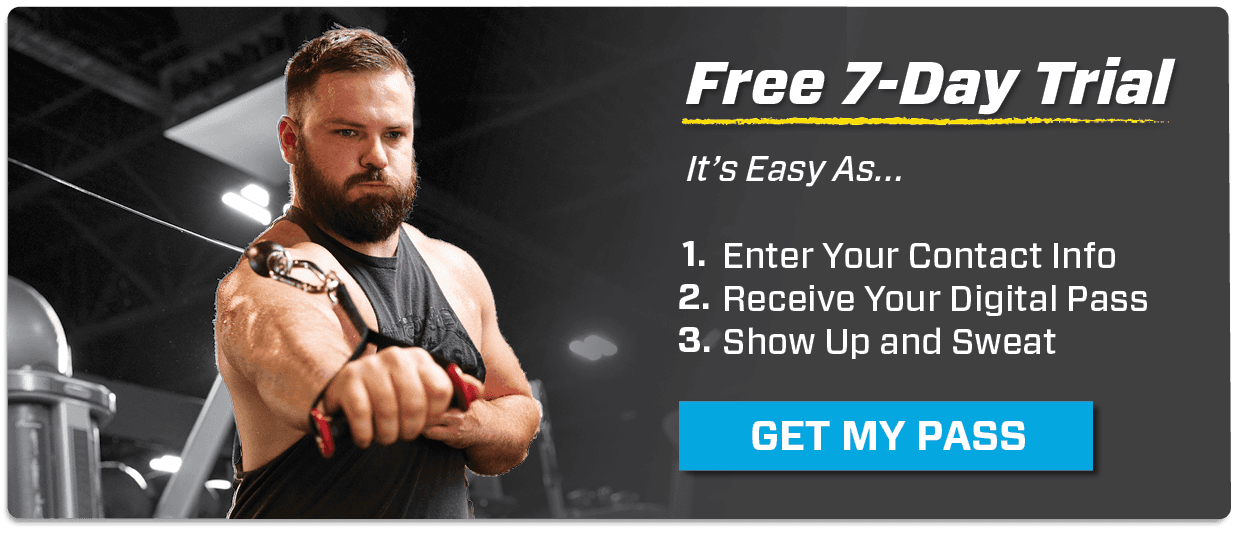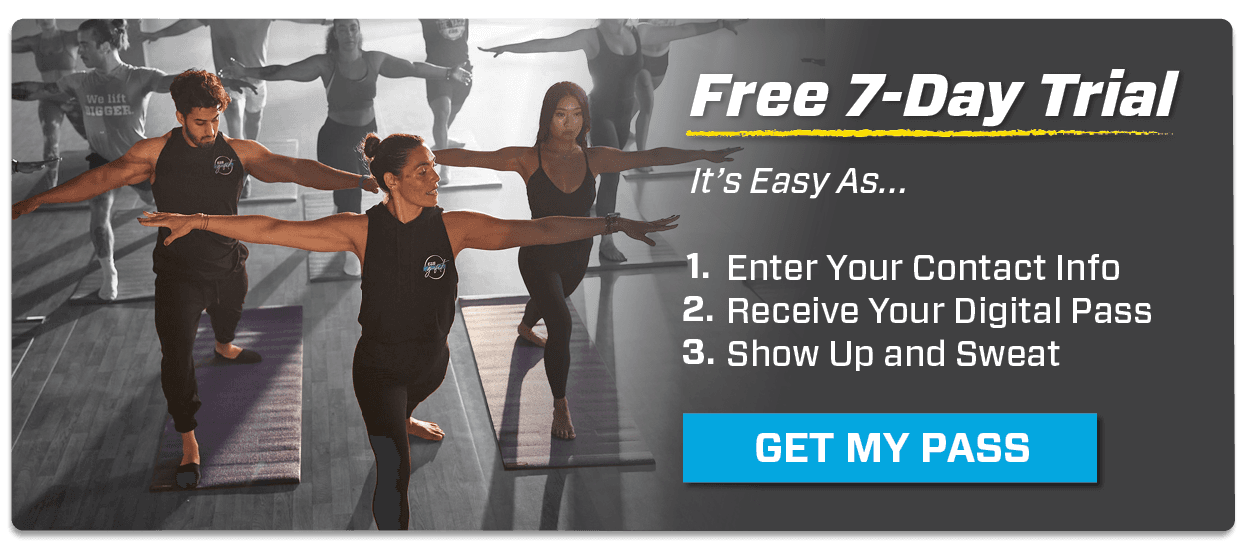A BEGINNER’S GUIDE TO RESISTANCE BAND TRAINING
Fitness Tips
Nov 16, 2023 • 8min read
Resistance band exercises for beginners are an excellent way to kickstart your fitness journey. If you’re new to the world of exercise or just looking for a convenient way to stay in shape, resistance bands might just be your new best friend.
In this blog, we’ll explore the ins and outs of resistance band training for beginners, the incredible benefits it offers and a variety of resistance band exercises to get you started on the right track.
WHAT IS RESISTANCE BAND TRAINING?
Performing resistance band exercises involves using elastic bands to create resistance during various movements. These bands come in different shapes, sizes and resistance levels, making them adaptable for all fitness levels. Whether you’re a complete novice or a seasoned gymgoer, resistance bands can be tailored to your needs.
WHAT ARE THE DIFFERENT TYPES OF RESISTANCE BANDS?
Exercisers looking to purchase their own resistance bands have several options to choose from. Figure eight resistance bands, ring resistance bands and lateral resistance bands are specialized and somewhat limited in how exercisers can use them.
If you want a set of resistance bands that will let you perform a wide range of resistance band training for beginners, then you should choose either compact resistance bands or fit loop resistance bands.
BENEFITS OF RESISTANCE BAND EXERCISES
Before diving into the exercises, let’s take a moment to appreciate the numerous advantages of incorporating resistance bands into your fitness routine:
Versatile
Resistance bands can be used to target various muscle groups and adapt to different fitness goals. You can perform a wide variety of exercises, from basic strength training to more complex movements, making them suitable for both beginners and advanced athletes.
Portable
Resistance bands are not only incredibly portable, but they also lend themselves perfectly to bite-sized workouts during your lunch break. Effortlessly fitting into a bag or suitcase, these bands allow you to take your workout anywhere, whether it’s a quick session at the office or while traveling. This level of convenience is a major advantage for busy individuals or those who often find themselves on the move, making it easier to maintain a consistent fitness routine even during the busiest of days.
Adaptable
With a variety of resistance levels available, you can start with the basics and gradually increase the challenge as you become stronger. This adaptability makes resistance band exercises a great starting point for beginners.
Efficient
Resistance band exercises allow you to engage multiple muscle groups simultaneously, providing an efficient full-body workout. This comprehensive approach can help you develop overall strength and stability.
Enhances Range of Motion
Resistance bands can be used to improve flexibility and increase your range of motion. Stretching and mobility exercises with resistance bands can help prevent muscle imbalances and reduce the risk of injuries.
HOW TO USE RESISTANCE BANDS
The beauty of resistance bands is that you can use them for many different things. They’re more versatile than you think!
Dynamic Warmups
Using a light fit loop band, exercisers can warm up their shoulders, hips and knees before their workout. For example, hold on to both sides of the band and move your arms forward and backward over your head.
Static Stretches
A fit loop band can help you get extra leverage as you work on increasing your mobility. For example, you can lie on your back, loop the band around the center of your foot and then use the band to gently pull your leg toward your face, giving you an excellent hamstring stretch.
Bodyweight Assistance
It can be incredibly difficult to learn bodyweight movements, like pull-ups, dips and pushups. Resistance bands can help. For example, loop the band around the center of the pull-up bar.
Very carefully, step inside the band and grab the pull-up bar. The band can then offer a little extra boost as you pull yourself up. By gradually using bands with lighter resistance, you can learn to perform pull-ups on your own.
Strength Training
Resistance bands can be a great strength training tool and can even be a great substitution for dumbbell exercises you already know and love.
YOUR GUIDE TO RESISTANCE BAND TRAINING
Now, let’s delve into the essential guidelines on resistance band training for beginners.
Choose the Right Resistance Bands
When starting, select bands with varying levels of resistance to cater to your needs. Lighter resistance bands are suitable for beginners, while more advanced individuals can opt for heavier ones.
Proper Form Matters
Focus on maintaining proper form during each exercise. This ensures that you target the right muscle groups and minimize the risk of injury.
Warmup and Cool Down
Don’t forget to warm up before your workout with some light cardiovascular exercise, like jumping jacks or jogging in place. After your session, perform a cool-down routine to ease your muscles and reduce the chance of post-workout soreness.
Start Slow
It’s perfectly fine to begin with just a few basic beginner resistance band workouts. As you become more comfortable, you can gradually add more moves to your routine.
Consult a Professional
If you’re unsure about your fitness level or have any underlying health concerns, consider consulting a Personal Trainer to ensure that beginner resistance band training is suitable for you.
WHO SHOULD USE RESISTANCE BANDS?
The beauty of resistance bands is that they are suitable for virtually everyone. Whether you’re an absolute beginner, a seasoned athlete or someone recovering from an injury, resistance band exercises can be customized to meet your needs.
Beginners seeking an efficient and flexible method to initiate their journey into fitness will find resistance bands especially attractive. These bands offer a gentle introduction to strength training, helping beginners build a strong foundation.
Athletes, on the other hand, can use resistance bands to add variety to their workouts, break through plateaus and work on specific muscle groups. They are also excellent for injury prevention and rehabilitation.
For those looking to help with anti-aging, resistance band exercises can help maintain muscle strength and bone density, promoting overall health and vitality.
BEGINNER RESISTANCE BAND WORKOUTS
For beginners at the gym, resistance band exercises offer a safe and effective way to build strength and improve muscle tone while gradually adapting to a gym environment. Here is a great beginner resistance band workout you can perform at the gym, focusing on fundamental movements and muscle groups:
-
Assisted Pull-Ups
- Attach a resistance band to the pull-up bar and loop it around your foot.
- This exercise provides assistance for pull-ups, helping beginners develop upper body strength.
-
Lat Pulldowns
- Attach the resistance band to the high cable pulley machine.
- Sit down and hold the band with both hands.
- Pull the band down to your chest, mimicking a lat pulldown machine to target your upper back and arms.
-
Seated Rows
- Attach the resistance band to the low cable pulley machine.
- Sit down on the bench and hold the handles with both hands.
- Pull the band toward your torso, working on your upper back and biceps.
-
Chest Press
- Attach the resistance band to a sturdy anchor point behind you or use a door anchor.
- Stand facing away from the anchor and hold the handles in front of your chest.
- Push the handles forward to work on your chest muscles.
-
Squats
- Step on the resistance band with both feet, holding the handles at shoulder height.
- Perform squats as you would with free weights, keeping your back straight and knees aligned with your toes.
- Squats target your lower body, including your quadriceps and glutes.
-
Bicep Curls
- Step on the resistance band and hold the handles by your sides.
- Curl the handles toward your shoulders while keeping your elbows close to your body to engage your biceps.
-
Tricep Extensions
- Step on the resistance band and hold the handles with your arms extended overhead.
- Extend your arms fully to work your triceps.
-
Standing Russian Twists
- Step on the resistance band and hold the handles with both hands.
- Twist your torso from side to side, engaging your core and obliques.
-
Glute Bridge
- Lie on your back with your knees bent and feet flat on the floor.
- Place the resistance band just above your knees.
- Lift your hips off the ground, squeezing your glutes at the top to target your glute muscles.
-
Leg Raises
- Attach the resistance band to a low anchor point.
- Lie on your back, loop the band around your ankles and extend your legs.
- Lift your legs as high as you can against the resistance, engaging your lower abs.
These resistance band exercises provide a solid starting point for your resistance band journey. Feel free to mix and match them, gradually increasing the resistance as you become more comfortable with the movements. As a beginner, it’s crucial to focus on mastering the basics and gradually progressing from there.
With a little dedication and a few resistance bands, you can strengthen your muscles, improve your endurance and boost your overall fitness. Whether you’re a novice or a seasoned fitness enthusiast, resistance band exercises are a valuable addition to any workout routine. So, grab your bands and start your journey toward a healthier, stronger you today.







